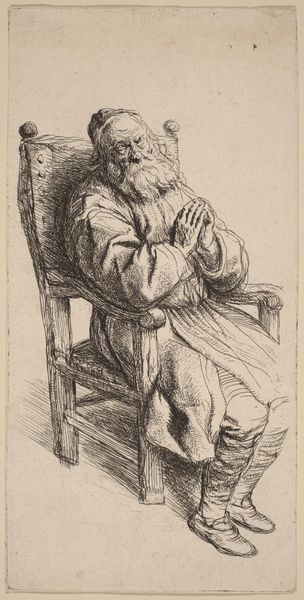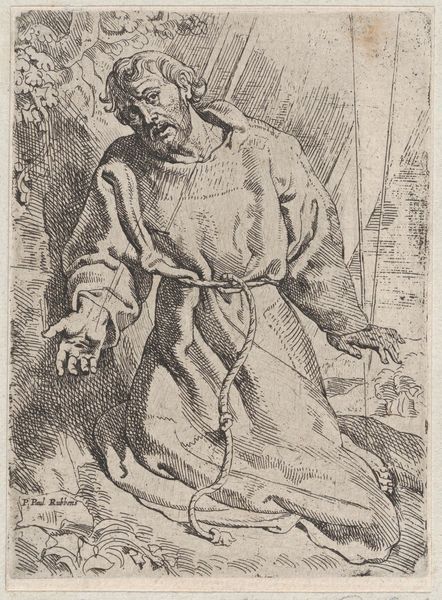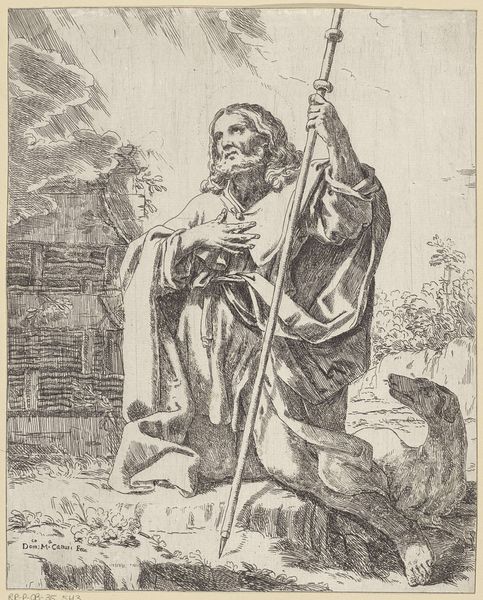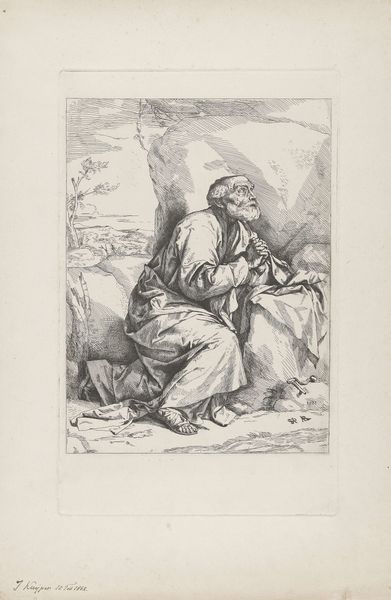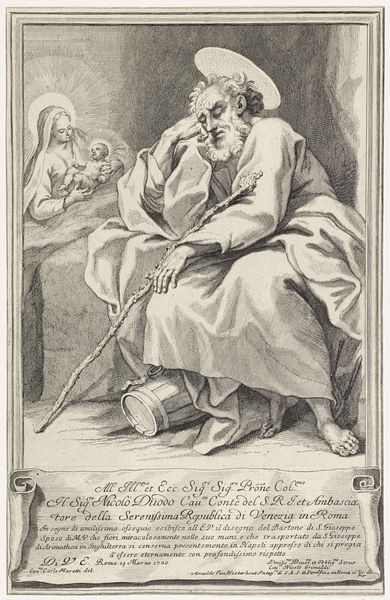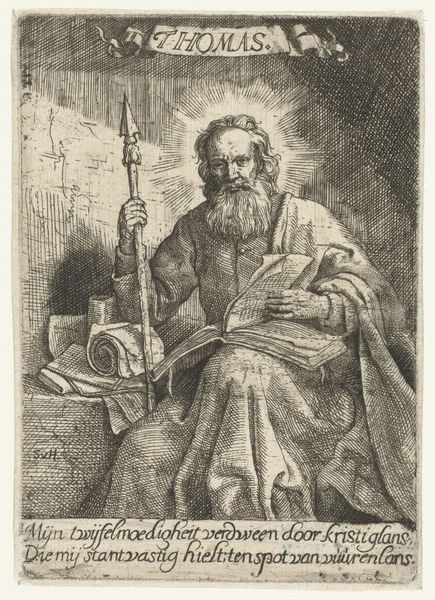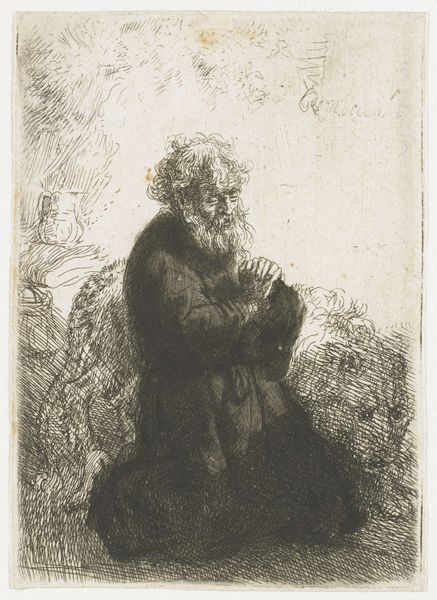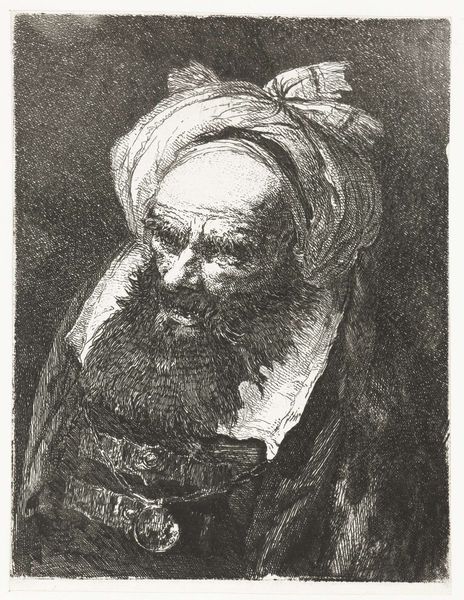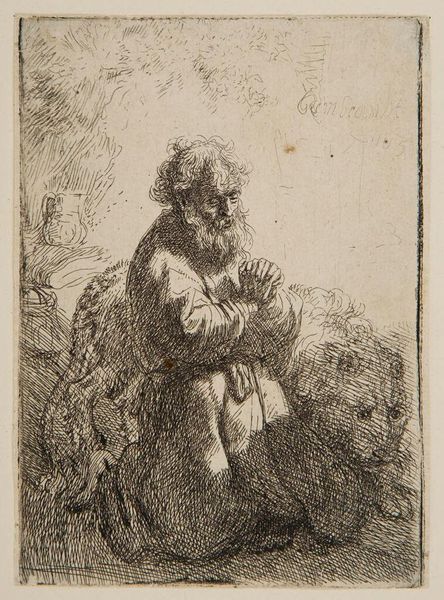
drawing, print, etching, pen
#
portrait
#
drawing
#
baroque
# print
#
pen sketch
#
etching
#
figuration
#
pen
#
history-painting
Dimensions: height 111 mm, width 83 mm
Copyright: Rijks Museum: Open Domain
Editor: This is "H. Hieronymus in gebed," or "St. Jerome in Prayer," an etching by Willem van Vliet from 1639. There’s an interesting intimacy to the scene. What do you see in this piece, beyond the obvious? Curator: I see the potent image of St. Jerome, of course, embodying repentance and scholarship, two seemingly conflicting ideals that actually reflect a profound understanding of humanity's struggle. Vliet's rendering leans heavily on established visual language. Observe the skull partially hidden at the lower left and his gaze is intensely averted to evoke an emotional and psychological tension within the saint, wrestling, no doubt, with earthly temptations. Is the viewer, then, drawn into his moment of catharsis? Editor: I didn’t initially notice the skull. Do you think that's a purposeful choice, to have it partially obscured? Curator: Absolutely. By not making the symbol blatant, Vliet asks us to participate in deciphering the narrative. What is death? Something faced directly or is its impact gradually recognized. Also consider, what is the symbolic role of the lion resting nearby? Does this animal signify his altered relationship with worldly concerns now subject to higher order? Editor: That's interesting. I would never have thought of the lion as representing conquered earthly desires, but I see it now. Thank you! Curator: Considering this representation within a larger history, remember how visual cues contribute meaning, adding depth over centuries. Each detail resonates with memory, affecting how we see ourselves in relation to ideals. What resonates the most with you? Editor: How such tiny marks create a powerful and timeless image. Thanks again.
Comments
No comments
Be the first to comment and join the conversation on the ultimate creative platform.
